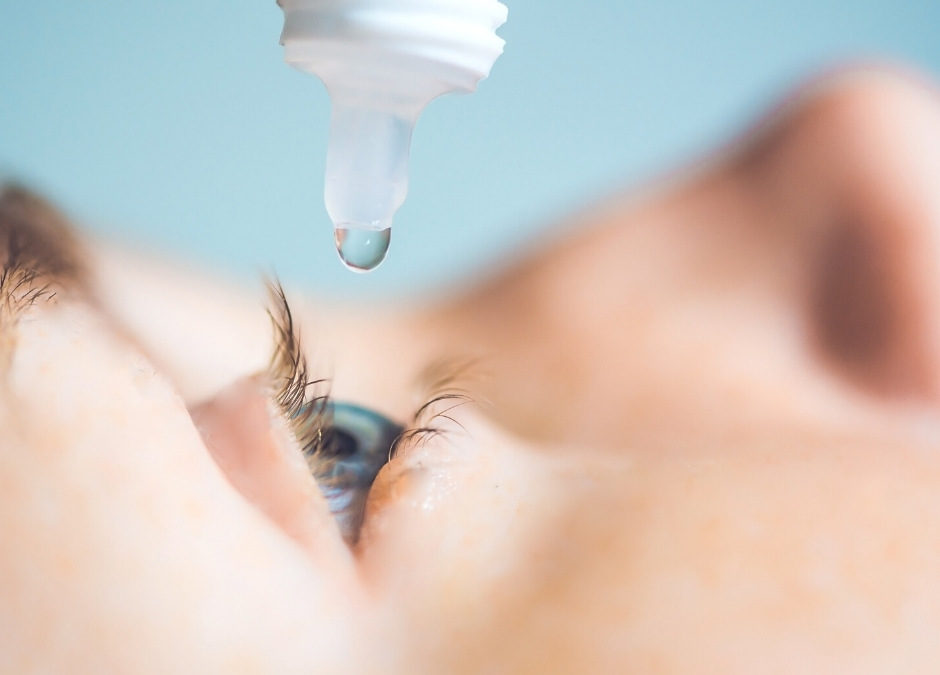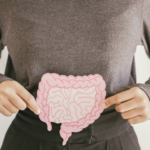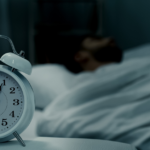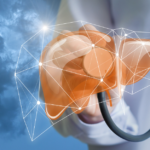About 30% of Canadians are myopic, aka nearsighted, meaning that they can see clearly close-up, but require corrective lenses to see things that are further away. Most cases are diagnosed in school-age children, and vision typically progressively worsens throughout the teenage years. There was previously not much that could be done to help, other than correcting the vision with glasses or contact lenses. However recent research is showing that Atropine eye drops can significantly slow the worsening of progressive myopia. So a kid who would have ended up with severe myopia requiring specialist lenses could stay at a medium level that’s easy to correct.
At Peoples Choice Pharmacy we custom compound Atropine eyedrops for your child based on a prescription from your eye doctor. Read on to find out why we are thrilled to be able to offer this cutting edge treatment.
Causes of Nearsightedness
1 – The Shape Of The Eye
Light entering the eye requires a specific shape in order to focus correctly. If the cornea (the front of the eye) is too curved or the eyeball is shaped more oval instead of round, distant objects look blurred.
2 – Genetics
There is significant evidence that we may inherit the tendency to develop nearsightedness. The risk of a child developing myopia is also higher if both parents are myopic compared to just one.
3 – Screen Time
Screens are a fact of life these days, however, spending a lot of time reading and watching a screen may make both children and adults more likely to develop myopia. Visual stress can cause temporary or permanent issues at any age, so it is generally accepted that increased screen time may account partly for the increasing prevalence of nearsightedness (myopia) in kids. Not to mention that research suggests kids who spend more time outdoors in natural light, and less time indoors in front of screens, are less likely to develop myopia.
4 – Diabetes
Chronic health conditions such as diabetes can cause visual impairment, with the most common being Diabetic Retinopathy – loss of vision due to damage in the blood vessels of the eye. However, High blood sugar can also increase the thickness of the lense and cause nearsightedness at any age.
Exciting Progress In Pediatric Ophthalmology
Most people diagnosed with myopia do not progress to severe myopia (defined as requiring correction over -5.0 D), and in these mild cases, glasses or contact lenses provide adequate support. However severe myopia increases the risk of serious eye diseases or retinal detachment. And as rates of nearsightedness increase, so do rates of severe myopia.
Myopia typically progresses much faster when a child’s eye is still rapidly growing between the ages of 5 and 15, usually stabilizing by the time puberty is over.
Recent discoveries indicate that regular application of low-dose Atropine eye drops can significantly slow the progression of myopia as it develops in children. Although the existing level of nearsightedness remains, the drops can help avoid the issue worsening to severe myopia.
Older Treatments For Nearsightedness
Studies show that Atropine is a significant breakthrough as an effective treatment that works for most children, with the benefits of being easy to use and having few side effects.
It has overtaken prior treatments to slow the progression of myopia, such as orthokeratology – contact lenses which are worn overnight to temporarily shape the cornea similar to the way braces work for teeth, so that a child may see clearly throughout the school day. These treatments can be inconvenient or have unwanted side effects.
Atropine is comparatively a very straightforward, effective, and much less invasive treatment, providing an excellent option to offer families of children who are becoming increasingly myopic.
What Age Should You Start Atropine Drops?
Data is still emerging as the research and use of these eye drops is still fairly new, so treatment recommendations may change over time even though the drops are already in use.
Factors that have not yet been clarified by research studies include the precise ideal age of starting the drops, the effect of the initial refractive error (ie level of short-sightedness), the effect of how fast myopia is progressing, and the difference that a family history of severe nearsightedness may make to the end results.
Myopia typically progresses much faster when a child’s eye is still rapidly growing between the ages of 5 and 15, usually stabilizing by the time puberty is over.
Childhood Nearsightedness Is A Serious Concern
What we do know is that myopia can interfere with a child’s education, daily activities and self-confidence. For those reasons, it is very important to visit an Ophthalmologist and treat nearsightedness as early as possible with glasses. Your Dr may suggest using atropine eye drops in addition to the lenses, to help delay the progression of your child’s myopia to much more severe myopia. The drops may have the additional benefit of helping to decrease the risk of long-term future eye complications, such as retinal detachment, glaucoma, and cataracts.
Atropine Eye Drops for Younger Children
At People’s Choice Compounding Pharmacy we are starting to see prescriptions for Atropine drops for children who are between the ages of 5 to 12 years old, who are diagnosed with at least -0.5 D of myopia, and whose vision has been clearly worsening over the preceding 6 months. The concern at this age is that they have many years left to progress, and so are of greatest concern. In that age group, we are typically asked to produce drops at a strength of 0.01%.
Atropine Eye Drops In Puberty
The drops have not been fully tested for predictable results in children over 12 years of age, however we regularly receive prescriptions for children up to 15 if their myopia is still progressing, particularly if it has increased by more than 1.0 D in a year.
Is Atropine A Legitimate Treatment?
Yes. Although it’s use in slowing the progression of myopia is fairly new, the use of low-dose atropine is quickly becoming more mainstream compared to even 1-2 years ago. Ophthalmologists are seeing more study results showing the treatment’s benefits and risks, leading to an increase in the treatment’s popularity. As well, health insurance companies are starting to cover the cost of the drops.
What Are The Side Effects Of Atropine Eye Drops?
While previous higher dosages of Atropine eye drops showed some acute side effects such as Tachycardia, dry mouth, urinary retention, constipation, and flushing skin, these reactions have not yet been seen in any of the children in studies using low-dose Atropine at 0.01%.
Local Irritation
The majority of kids experience little to no side effects from nightly use of Atropine eye drops. Side effects that are seen from time to time include minor eye irritation accompanied by redness and itching, and temporary blurred vision. Current guidelines state that drops should be administered at bedtime – however this is due to previous higher dosages more commonly causing irritation. With a low dose of Atropine that does not irritate the eyes, drops can be administered at your most convenient time, as long as it is the same time each day.
Allergy
On occasion, it may be possible to develop an allergy to Atropine, in which case the treatment would need to be discontinued. Our current experience puts this risk at about 1 in 100, however more research is needed to state the risk of allergy with more certainty.
Pupil Dilation in Blue Eyes
High dose Atropine drops are used during eye exams to dilute the pupil and relax the lense. However low-dose Atropine does not dilate the pupils as much. While a small amount of pupil dilation can occur (up to 1mm for dark eyes and up to 2mm for lighter eyes), it is usually not enough to require the use of sunglasses or reading glasses. Atropine appears to be just as easily tolerated by people with blue eyes as brown, and even with a higher dilation occurring in blue eyes, it is rare for patients to stop using the drops due to “near blur”.
How Does Low Dose Atropine Work?
Low dose Atropine works by blocking receptors in the muscles that normally change the shape of the lens, allowing the lense to relax as the eye grows.
What Results Can Atropine Eye Drops Produce?
Atropine is a long-term treatment which should in time slow the rate of progression of myopia in children by 30-50%. In the first 6 months of use however, you should expect to continue to see progression in the child’s myopia. After 6 months the progression should slow significantly to –0.50 D per year or less. The complete arrest of myopia developing is a rare occurrence and should therefore not be an expected result.
How Long Do You Have To Take Atropine Eye Drops To See Results?
The current duration of treatment with low dose Atropine starts at 6 months, and may continue up to 2 years if the eye is responding well. After the initial treatment the child’s vision should be monitored to see that the myopia remains relatively stable. Should the myopia begin to worsen again, treatment may be re-started for a year at a time, until the eyes have stopped growing between the ages of 15 and 18.
What Is The Best Dosage Of Atropine For Myopia?
At People’s Choice Pharmacy, we follow the prescription provided by your ophthalmologist. They have the expertise needed to decide the appropriate dose your child should be on, and you should be having regular follow-up visits to assess the tolerability and effectiveness of the drops. We will communicate with your doctor as needed, and aim to ensure that your child is on the lowest effective dose with minimal side effects. A dose of 0.01% is a typical low-dose dilution that we see often these days. Previous dosages of 0.5% to 0.1% had increased side effects while showing the same end results.
How To Use Atropine Eye Drops for Myopia
1 – Keep Your Drops In The Fridge And Respect The Use-By Date
Atropine eye drops need to be kept refrigerated, and like all medications, they should always be thrown out after the ”use by” date written on the bottle. Be sure to call People’s Choice Pharmacy 24 hours before you need a refill so that we can have your new drops ready for you to pick up.
2 – Prevent Contamination
In order to prevent contamination, all eye drops should be administered far enough away from the eye to prevent the tip of the dropper bottle to come into contact with the eye, or any other surface.
3 – Start Treatment Early
The earlier treatment is started the better the end results should be. It is important to have your eye drops compounded and start using them right away once you have been given a prescription. Myopia tends to progress fastest between the ages of 5 and 15, so the application of low-dose Atropine drops can be most effective during those early years.
4 – Apply The Drops At The Same Time Each Day
Many parents choose to use the drops at bedtime in order to prevent any disruption of the day’s activities due to temporary blurred vision or irritation. However with low dose Atropine these side effects may not occur, and a different consistent time of day should work just as well. Always check with your prescriber if you intend to apply the drops at a different time than indicated on your prescription.
Where To Buy Atropine Eye Drops
People’s Choice Pharmacy in Richmond Hill, Ontario is a quality compounding pharmacy. We can compound your Atropine drops to your prescription with 24 hours notice, and we ship Canada-wide.
About People’s Choice Compounding Pharmacy
Serving Richmond Hill, Toronto, Markham & Vaughan
Free Ontario-Wide Shipping on all Bioidentical HRT
Located on Yonge Street, People’s Choice Pharmacy is a state-of-the-art, innovative, full-service compounding pharmacy serving Toronto, Richmond Hill, Markham and Vaughan, and shipping across Ontario. Our certified technicians with 45 years of experience will custom compound your medications using top quality, lab-tested ingredients. Call to speak to a friendly, knowledgeable Pharmacist today!
References
Holden et al. Ophthalmology. 2016;123(5):1036-1042.
https://nei.nih.gov/eyedata/myopia/tables.
Chua W-H et al. Ophthalmology. 2006;113(12):2285-2291.
Tong L et al. Ophthalmology. 2009;116(5):572-579.
https://www.reviewofoptometry.com/article/can-myopia-delay-diabetic-retinopathy
Rauch, K. (31 August 2017). Low-Dose Atropine for Kids with Myopia. Retrieved from https://www.aao.org/eye-health/news/low-dose-atropine-kids-with-myopia
Tan, D. (1 June 2016). Childhood myopia and the use of atropine eye drops. Retrieved from https://www.ndcs.com.sg/news/patient-care/childhood-myopia-use-of-atropine-eye-drops
Heiting, G. (20 August 2018). Myopia control: Is there a cure for nearsightedness? Retrieved from https://www.allaboutvision.com/parents/myopia.htm
Wu, P.C., Chuang, M.N., Choi, J., Chen, H., Wu, G., Ohno-Matsui, K., Jonas, J.B., Cheung, C.M.G. (2018). Update in myopia and treatment strategy of atropine use in myopia control. Eye, 33(1), 3-13.
Coats, D.K., Paysse, E.A. (13 September 2018). Refractive errors in children. Retrieved from https://www.uptodate.com/contents/refractive-errors-in-children?sectionName=REFRACTIVE%20ERRORS&search=treating%20myopia%20in%20children&topicRef=5849&anchor=H3&source=see_link#H3
Chia A, Chua WH, Cheung YB, et al. Atropine for the treatment of childhood myopia: safety and efficacy of 0.5%, 0.1%, and 0.01% doses (Atropine for the Treatment of Myopia 2). Ophthalmology 2012; 119:347.






